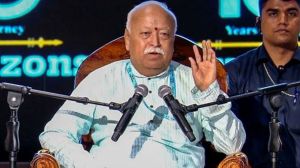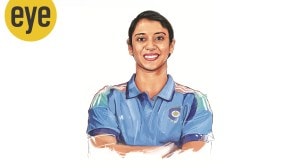2010 Indias year on track and field as records fall,new stars rise
Indian athletes blazed past nine personal bests and several season bests.
In winning five gold,two silver and four bronze at Guangzhou,Indian athletes blazed past nine personal bests and several season bests capping an unprecedented year for Indian athletics that has already seen eight national records rewritten.
What makes 2010 even more special is that it hasnt been just the usual throwers and middle-distance runners wrapped in Tricolour on the podium. The highs have come from sprints and long-distance races,involving both men and women,marking the arrival of Indian athletes on the world stage.
While India won more gold medals in athletics in the 2002 Busan Asiad,the fact that Guangzhou was their second noteworthy performance after the recently concluded Commonwealth Games has made people sit up and take notice.
Koreas Jae-Keun Chang,who won the 200 m Asiad gold at a packed Jawaharlal Nehru Stadium in 1982,thinks that the giant is awakening.
There was a lull in Indian athletics post P T Usha.
And even when she was there,India wasnt a dominant power. Now things have changed. India started with two very good gold medals on Day 1 here and followed that up with three more. Whats good to see is that like the Usha-era,they believe they are worthy of gold medals,nothing less, says the ardent India-watcher,who was in Guangzhou as Chairman of the Korean Track Technical Committee.
Behind this turnaround is another factor the unsung heroes of these Games,whose mere presence ensured that their compatriots were pushed to their limit.
So while the 3,000 m steeplechase will be remembered for Sudha Singhs national record,it was P Jaisha whose blistering run in the first 1,000 m set the pace and helped her finish first. Earlier that day,Kavita Raut had done the same,enabling Preeja Sreedharan to set the national record in 10,000 metres.
Indians are not just improving timings as individuals,there are more of them doing it than ever before. The 400 m hurdles tag team was Ashwini Akkunji and Jauna Murmu,while jumpers Mayookha Johnny and Prajusha Malliakal have pushed each other and added crucial centimetres. Discus throwers Krishna Poonia,Harvant Kaur and Seema Antil too form a formidable trio.
Numbers have not just increased the probability of winning but also taken the pressure of a nations hope off athletes. In the past there was the lone P T Usha in the 80s,Shiny Wilson and K Beenamol in the 90s and Anju Bobby George more recently. This time around,several athletes were ready to step up.
When I was competing,more than the pressure on me,the problem was that there was no competition for me. It was difficult to push myself in the nationals as I knew that I would win gold anyway with an average jump. Now there are so many girls who are equally talented, says Anju Bobby George.
Former national 100 m sprinter and present Athletics Federation of India vice-president Adil Summariwalla says the scenario hasnt changed overnight. We have been investing in a youth programme. We have this novel national inter-district tournament that helps us tap talent from around the country, he says.
With the 2012 London Olympics not far,Summariwalla adds,what Indian athletics now needs is urgent financial push.
Former hockey captain Viren Rasquinha,who is the CEO of Olympic Gold Quest,an organisation that arranges corporate funding for elite athletes,feels athletics is taking the success route that boxing took some time back.
Indian athletics is poised to take off. Corporate funding can be expected after Guangzhou. But it is hard work, he says.
In case corporate houses doubt the depth of the talent pool,perhaps they could see replays of the 10,000 m mens race at Guangzhou. He didnt win any medal,but even in the crowd of late finishers in the race that was won by a Bahrainian,19-year-old Suresh Kumars smile was hard to miss.
Kumar,who had earlier this year won the Asian Junior Championships,finished the race at a seemingly modest 28.59.99. But in doing that,he knew,he had cut off over half a minute from his previous best.



- 01
- 02
- 03
- 04
- 05




























